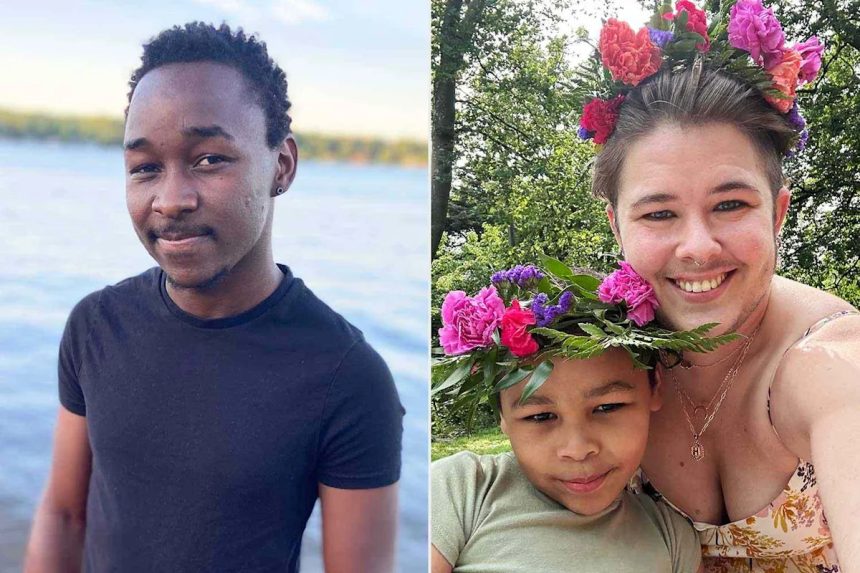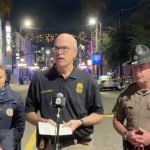NEED TO KNOW
-
Hannah Ege’s husband, Sheria, was fatally injured after being struck by a speeding car in 2021 , prompting the grieving wife to begin using his death to push for street safety reforms
-
Ege’s efforts come as pedestrian deaths across the nation near a four-decade high
-
“Sheria would want me to tell his story,” says the 31-year-old
Days after Hannah Ege, husband Sheria Musyoka and their 3-year-old son, Theo, relocated to San Francisco from the East Coast to start a new life in 2021, Musyoka went jogging and was fatally injured by a truck traveling nearly 75 mph.
A month later, still numb with pain over Musyoka — a corporate recruiter who immigrated to the U.S. from his native Kenya and put himself through Dartmouth College — Ege (who is nonbinary and uses they/them pronouns) recalls thinking, “I need to do something.”
Ege didn’t know it at the time, but the tragedy that happened to Musyoka has been playing out across the nation as pedestrian deaths near a four-decade high.
According to the latest statistics from the Governors Highway Safety Association, the number of pedestrian deaths is up 48% from just 10 years ago, even as fatalities have dropped in dozens of other developed countries in Asia, Europe and elsewhere, the Centers for Disease Control and Prevention found.
Take PEOPLE with you! Subscribe to PEOPLE magazine to get the latest details on celebrity news, exclusive royal updates, how-it-happened true crime stories and more — right to your mailbox.
The cause for the increase in these fatalities goes beyond driver distraction — such as phones and dashboard touch screens — and, according to the CDC, appears to be linked to the growing number of large, heavy vehicles like SUVs and to America’s penchant for complicated, high-speed roadways.
Most traffic victims in the U.S. are killed in vehicles, but the rate of pedestrian deaths is increasing faster: In 2024, 7,148 pedestrians were killed by automobiles, and tens of thousands of victims required hospitalization.
“We prioritize driving and driving fast much more than pedestrians,” says Wes Marshall, a professor of civil engineering at the University of Colorado Denver. “The problem is solvable,” he says. “But it’s not going to be easy.”
Transportation Alternatives
Families for Safe Streets held a day of remembrance for traffic victims in 2023.
Ege, a 31-year-old special education teacher, ended up reaching out to the group Families for Safe Streets, whose members showed up at their apartment shortly after Musyoka’s death to help them through those initial days and weeks of grief.
“They were so hands on,” says Ege of the organization that was launched by Brooklyn mom Amy Cohen, who lost her 12-year-old son Sammy to a driver speeding to make beat a traffic light as he walked to soccer practice in 2013.
“I didn’t know advocacy groups did that,” Ege says.
The group — which has thousands of members and has notched an impressive number of legislative victories on the local and state level — seeks to harness the grief and anger of survivors of crash victims to ensure that other families aren’t forced to endure their heartache.
Ege soon began meeting with officials in San Francisco and Philadelphia, where they now live, while grappling with the trudging but transformative work of gathering others to the cause.
“It’s a lot of one-on-one meetings, dialing in for town halls and writing articles,” says Ege, who is particularly focused on how technology — such as speed cameras and devices installed in vehicles to limit how fast convicted serial speeders can drive — can be used to make streets safer.
Their work recently helped get 15 speed cameras installed on a major arterial in Philadelphia where 64 people have died in vehicle accidents over the past five years
“Sheria would want me to tell his story,” Ege says of their late husband. “And it’s the least I can do to make sure that no other families have to endure what we have.”
Read the original article on People









